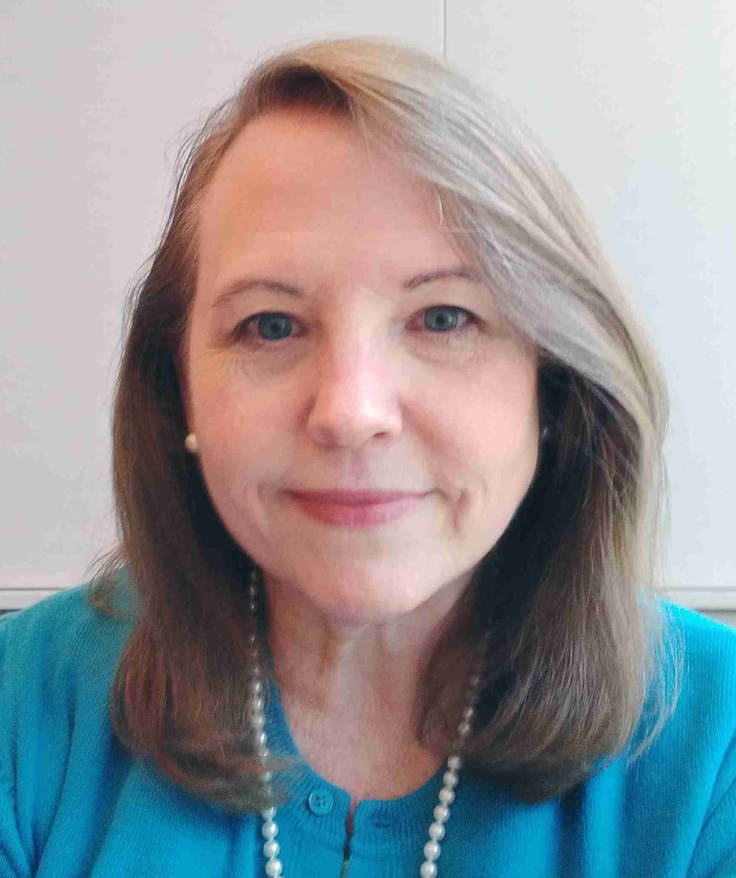
Pat Wrona is the CARPLS Director of Legal Services, and has been with CARPLS since 1995. She oversees a 50-person staff delivering services in thirteen practice areas, providing over 85,000 consultations annually. Under her leadership, CARPLS has become a national leader in legal service delivery innovation. Pat is an expert in employment law and, during the pandemic, created BennyFits Illinois, a virtual assistant helping thousands navigate unemployment. She ensured CARPLS smoothly transitioned to a virtual model and expanded services to play a core role in various projects, bringing critical help to many. As an adjunct professor and through various committee roles, Pat shares her passion for public interest law. In 2022, Pat received the Thomas H. Morsch Public Service Award.
What was it like starting at CARPLS, which was a first of its kind organization?
I started in October of 1995. I had worked in big law and I had started my own law firm about two years before that with a partner. And one thing that was really important to me, that I wasn’t able to do at the law firms I had worked at, was pro bono work. Whatever pro bono I had done was not encouraged back in that time, so I always wanted to do something that gave back to the community. I had worked in my law school’s legal clinic at DePaul and had enjoyed the work. And just having my own practice, I had people come through who couldn’t afford to pay me. So I was kind of doing involuntary pro bono in a sense for some clients, and I just saw the great need that there was.
How did you hear about CARPLS?
I saw an ad in the Chicago Daily Law Bulletin that was looking for legal aid attorneys at an organization called CARPLS. I thought it would be fun to talk on a legal aid hotline. And I really just loved MaryAnn Sarosi’s vision. Back then, everybody was part time—it wasn’t really a career for anyone at the time. We were kind of an itinerant staff. We used a DOS program, and that was pretty advanced for the time. We would talk to clients, analyze their situation and make a proper referral to another legal aid program. When CARPLS started, we were the new people, the new kid in town. We always had a lot of people calling us and we were always trying to work quickly, but it was harder back then because we didn’t have the technology underpinning us. We joke around a lot about what it was like “back in the day.” We would go through this sort of intensive two-week training about every area of law, and we would get a ton of handouts. When a call would come in about a topic, we would flip to that subject matter. It was a very different time, but a lot of fun. And we knew we were doing something new and different and creative. And even though I was doing it one day a week, on Wednesdays, it really lit a fire in me about public interest work that I had really never had a chance to do much of because of my background.
How did you end up becoming Legal Director?
I became Legal Director in the summer of 2007. I just kept getting drawn in more and more as the years went by.
What we do here is compelling, really compelling. I just wanted to be involved in the really the critical role that we play here. Because I have come to really understand how access to justice has to begin with getting a chance to talk to a lawyer. There is no access to justice without that first piece. 60% of everybody who calls us has never talked to a lawyer before in their life, and that just seems wrong to me given how many legal problems are out there.
We can get very high tech, and we can Zoom with people, but it is in that personal, back and forth between attorney and client that is at the very heart of what we do. And I think a lot of people who work here, they get a great deal of personal satisfaction out of that sort of one-on-one encounter that we have.
How did things work differently back then vs. now?
I think CARPLS shifted a lot in the early 2000s. Because many people who were part-time moved into a more full-time role. We have also always maintained a lot of flexibility. We became a place that was conducive to having children and being a lawyer at the same time, for folks working here who had young children and being able to work part time. There weren’t a lot of opportunities for that at the time, and I would say there still are not. So it’s been a nice kind of thread.
When did you start feeling like CARPLS was a legal aid leader, the frontline service we describe now?
It feels like we spent the good part of the first 20 years proving the need for us, and our value, that what we were doing helps the legal aid landscape. We were happy to always make a referral, and the ones that we’re able to make tended to be good referrals, so I think that goodwill built up over time.
For a while, everybody in legal aid was doing their thing, and doing it very well but without a lot of connectivity between them, and then in 2017 IL-AFLAN came along. And now the system was endorsing this kind of concept, that there’s going to be a front door, and CARPLS is going to do the brief legal services, analysis, and advice. And then there’s going to be network partners who will take referrals from that hotline. Because of how we used technology and our expertise, we were chosen to manage the hotline. Partners were able to see the value of this structure. It really started flowing and working out and I think it’s really then that a lot of the community said we understand the value of CARPLS.
What have you been surprised about?
I am blown away at the volume of what we are doing. Because back in the early days, it was around a few thousand people a year and then 12,000, then 50,000 and now over 85,000. That is a lot of of help that we’re providing to the community. And the legal issues here are extremely challenging, and part of the challenge is that we are doing this at volume.
If you had to choose three major CARPLS highlights throughout our history what would they be?
When we decided to do face to face work at the courthouses, that was a pivotal decision and moment in our growth. It took the brief services model into the courthouse, where we hadn’t been. It required a higher skill level of our attorneys because it’s harder to talk to people in person. I also think it made CARPLS much more visible.
The second highlight would be when we moved our client management system to the Salesforce platform. The technological advances had finally come to a place and a moment where we could tap into some of that big technology, and that was Salesforce. That brought us light years ahead of where we had been and brought us into the realm of being able to realize CARPLS’ technological promise that we had from the very beginning.
And then I would say CARPLS managing the IL-AFLAN hotline. The idea that people in state, people who were involved in creating the whole IL-AFLAN network, thought of us to be the gateway to the whole network was humbling and a great acknowledgement and accomplishment. I think it’s one of the most feel good things we have done here at CARPLS. I was an Air Force brat myself, my dad was career military. Personally it gives me a lot of gratification that we are helping veterans.


